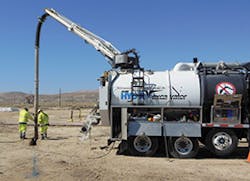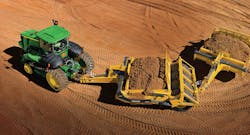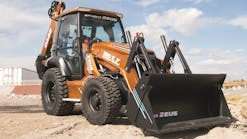In Part 3 of this continuing series, author Carol Brzozowski compares the applications of vacuum and hydro excavation systems in directional boring operations. While Brzozowski examined air versus hydro excavation job-site considerations in the previous segment in this series, she further discusses why utility location—the topic that launched this series—continues to factor into the following excavation site projects.
Hitting the Hidden Mark (Part 3) By Carol Brzozowski
The combination of the vacuum and utility locator help get that precise target.
Miller Pipeline, based in Indianapolis, IN, installs natural gas pipeline systems in 27 states and uses McLaughlin systems.
“Most of our work is performed by an underground drill—directional boring—and, therefore, because we do directional boring, locating utilities or items that would be in the ground is very important to us,” says Jim Romer, fleet supervisor for the company’s Birmingham, AL-based south hub. “We want to avoid damage at all costs. Before we do a procedure, we need to first of all get a location on any known existing items in the ground, whether they be cable, water, or sewerage.”
Once those are located by the company’s crew or a contractor, the company will use water pressure to loosen up the dirt and the vacuum will pull material out of the ground so crew members can visibly see the located items.
Miller Pipeline uses primarily trailer-mounted McLaughlin units and a few of its older air-vacuum excavators from Vacmasters. The company also builds its own air units.
In the South, the company prefers to use the McLaughlin units for their tank size and water pressure.
“If they have a long bore that they’ve got to get out ahead of—800 to 1,000 or 2,000 feet—they need to spot it out quite a bit in front of that boring machine, and they need something quick,” says Romer. “The McLaughlin machine is quick in that regard.”
The company will use the Vacmasters for jobs of a few hundred feet, he adds.
In the area around Birmingham, AL, hydro excavation is the preference due to soil type, Romer says.
“The soil here is very different than in other areas of the country,” he says. “You’re going to run into rocky soils and also a bunch of clay. Because you don’t really know what you’re going to run into, you really need to be ready for whatever soil circumstance happens to be in that particular spot. The water allows you to be very versatile and use it no matter what, whereas air—once you got into clay or something like that—would not work there as well.”
Romer credits the McLaughlin units for being good at sucking up slurry from the drill and water process as to avoid damage to the area.
“When you’re pulling back a lengthy drill shot or a lengthy piece of pipe, you’re going to use a lot of water in that boring instance,” he notes. “Not only do we go out front and do the spot work, but we double back behind the drill and suck up the slurry as well.”
Miller Pipeline always does locating work, even if crewmembers are told there’s nothing under the ground.
“We’ll spot it anyway because that’s our procedure,” Romer says. “We’ve found sewers or water mains that we were told weren’t there. There’s definitely cable and fiber optics in the ground that supposedly isn’t there,” he says.
“Those surprises pop up on a daily basis. In using the wet-dry vac systems, that allows us to find it without damaging it, even though it was never supposedly in the ground in the first place.”
Romer notes that machine capabilities have evolved to become more powerful and allow his company’s crews to do jobs quicker than when they started using them 15 years ago.
“There are even larger vacs than what we use down here,” he says. “When you’re on a city street, you’re creating slurry, and that can cause very large problems.”
Romer says he believes that in the future, utilities and government entities—be it a transportation department or a municipality that owns its own utility—will request that a contractor have a vacuum truck in its fleet.
“Right now, it’s considered a luxury,” he says. “I think it will become a necessity versus a luxury.”
In the next part of this series—a continuation of vacuum excavation applications—author Brzozowski discusses directional boring. Please see the links below to refer back to previous posts in this series.








